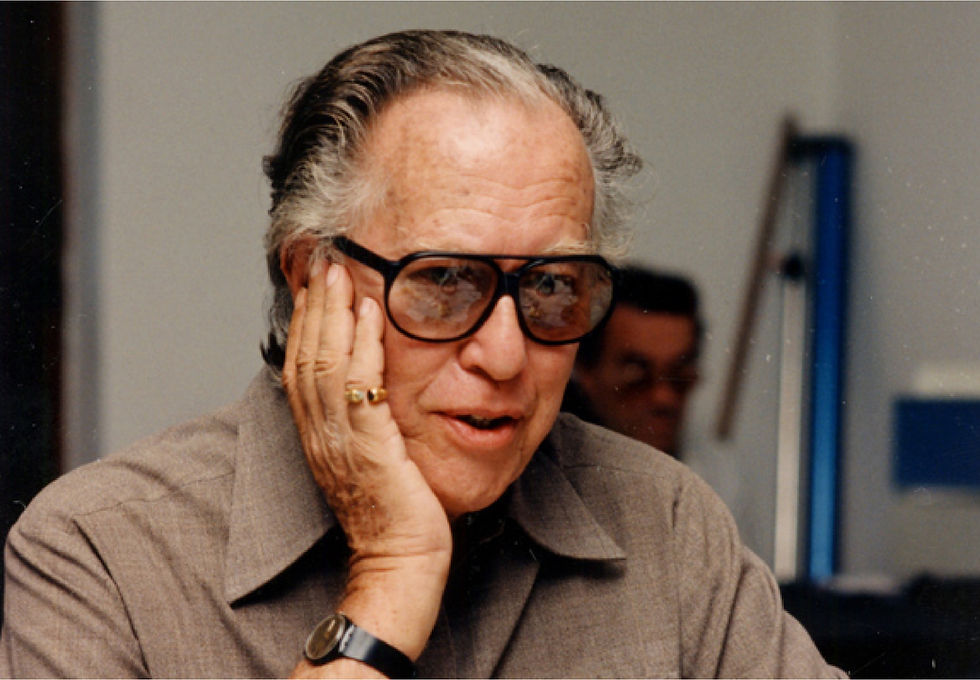Eileen Gray. Irish. Architect. Bisexual. Total Badass.
- tipsy modernist
- Mar 27, 2020
- 3 min read
Updated: Dec 5, 2024

To say that Eileen Gray was a non-conformist, doesn't begin to do justice to this brilliant woman. An extraordinarily talented polymath, she started out studying fine arts but eventually became an architect (self-taught) and interior designer. Although she is most famous for her modernist furniture, she designed several homes and was an accomplished photographer and painter as well.
She was born to a wealthy aristocratic family in Ireland in 1878, but eventually made her way to Jazz Age Paris with her girlfriend Jessie Gavin. They quickly became a part of the thriving lesbian arts community in Paris, frequenting the salons of Nathalie Barney and others. She was living her best life in Paris- dating men and women, flying planes and designing sumptuous interiors for the lesbian demi-monde. She was so successful that eventually she opened her own interior design studio called Jean Desert in left bank Paris.

photo NMI

In the mid 1920’s she fell under the influence of the bauhaus and de Stil movements and was inspired to produce more streamlined functional furniture in chrome, leather and glass. Her timeless designs are easily recognizable by her use of bold geometric forms and folded planes which look just as modern today as they did in the 1920’s. The E-1027 table is arguably one of her most famous pieces. Designed between 1926-29, it's portability,and adaptability are hallmarks of Eileen Gray's design. It can adjust to different heights so that it can be used as a night table or a side table for cocktails in a living room.
EG quickly gained acclaim for her ground-breaking modernist interiors and became friendly with Le Corbusier, who acted somewhat as a mentor. The two exchanged plans and models, and influenced each other’s work. They had a famous, very juicy falling out over the villa she designed in the South of France, E1027. (look for the blog about that coming soon- it's a doozy.)

After World War II Eileen Gray’s reputation and architectural contributions were forgotten. Some have theorized that her obscurity was a direct result of her public dispute with Le Corbusier over E-1027. But no doubt the war also contributed to her struggles. Like Lilly Reich, her career never recovered from the hiatus imposed by the war and the struggling economy that resulted afterwards. In the meantime, the careers of her male peers like Le Corbusier blossomed.(Natch)

photo NMI
When her friend with benefits, Jean Badovicci died in 1956, most of her architectural projects were attributed to him and later Le Corbusier. (Because of course) In 1968 architectural historian Joseph Rykwert re-discovered and published her work, correctly attributing the villa E-1027 and other projects . Even then her contributions were disputed by noted critics (and douchebags) Reyner Banham and Arno Goldfinger. By 1970 there was renewed interest in Eileen Gray’s work, thanks in part to the efforts of her niece Prunella Clough and art historian Joseph Rykwert. Eileen Gray was 90. When she died in 1976, her reputation had been restored and she had been made an honorary fellow of the Royal Institute of the Architects of Ireland.

Here's a photo of EG looking like a total badass pirate at the age of 92 in her apartment on Rue Bonaparte in Paris. She's seated on a chair of her own design, with the lacquered screen that was one of her first designs behind her.
Photo by Alan Irvine. NMI
Sources: Eileen Gray, Her Work and Her World by Jennifer Goff
Eileen Gray: Designer and Architect by Phillipe Garner
Staying in: Eileen Gray and the Design of Sapphic Modernity by Jasmine Rault
Bard Garduate Gallery in NYC put together an amazing show about Eileen Gray- you can link to it here
Thirsty for More? Check out todays' other post- The Champs Elysées Cocktail here.
Unveiling our newest addition to the blog-
The Book Report.
In this edition we ( the bitchymodernist and her sister Hannah Barrett- court painter to the wicked) discuss Jasmin Rault’s timely book- Staying In- Eileen Gray and the Design of Sapphic Modernity.





Comments